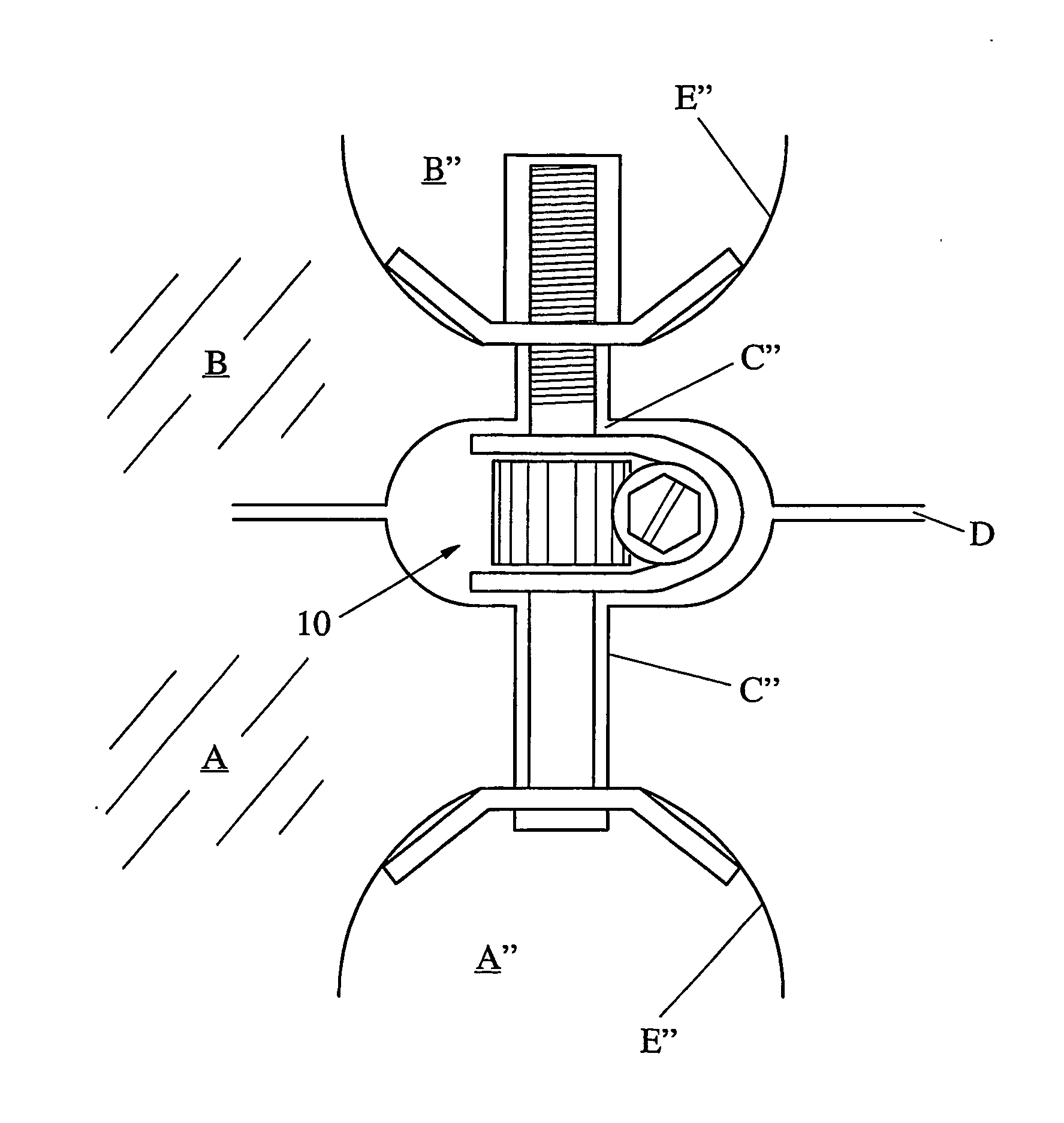Clamping assembly
- Summary
- Abstract
- Description
- Claims
- Application Information
AI Technical Summary
Benefits of technology
Problems solved by technology
Method used
Image
Examples
first embodiment
[0058] Within these cut-away portions, an adjustable clamp assembly 10 is positioned.
[0059] The clamp assembly 10 is described with reference to FIG. 2b, shown in isolation from the objects A, B, so that the details of the clamping assembly can be understood readily.
[0060] The clamp 10 includes first and second clamp members in the form of a first clamp component 30 and a second clamp component 20.
[0061] As seen in FIG. 2a, the clamp components 20, 30 are adapted to co-operatively bring together the wall surfaces E″ of the cut-out portions A″, B″. Effectively, when the clamp 10 draws the two surfaces E″ together, this draws together the two end surfaces of the objects A, B.
[0062] In FIG. 2b, the two clamping components 20, 30 have inner surfaces 21, 31 that are adapted to abut against the surfaces E″.
[0063] InFIG. 2b, the second clamp component 20 has an inner surface 21, while the first clamp component 30 has an inner surface 31.
[0064] As seen in FIG. 2b, both the inner surfac...
embodiment 10
[0081] The adjustable clamp assembly 400 operates in a similar manner to the embodiment 10, and includes first and second clamp members 430, 420 having respective facing inner surfaces 431, 421 adapted to abut against the wall surfaces E″ shown in FIG. 2a. The assembly 400 further includes an elongated connection member in the form of a cylindrical rod 440 having a threaded portion 441 at one end, to which the first clamp member 430 is connected by screw-thread engagement.
embodiment 400
[0082] A gear assembly in the form of a worm drive assembly 450 incorporates a first gear member having a worm gear 451 and a second gear member having a worm wheel 452. In the embodiment 400, the second gear member is integral with the rod 440, however in other embodiments the second gear member may be a separate component engaged with the rod 440. In either case, the key requirement is that rotation of the second gear member (worm wheel 452) results in corresponding rotation of the connection member (rod 440). The rod 440 passes through a hole in the second clamp member 420, to allow for the free rotation of the rod within the second clamp member.
[0083] Accordingly, in a manner similar to the operation of the embodiment 10, rotation of the worm gear 451 causes rotation of the rod 440, which in turn causes the inner surfaces 421, 431 of the clamp components 420, 430 to be either drawn together or apart along a path of linear motion, depending on the direction of the rotation of the...
PUM
| Property | Measurement | Unit |
|---|---|---|
| Force | aaaaa | aaaaa |
| Ratio | aaaaa | aaaaa |
Abstract
Description
Claims
Application Information
 Login to View More
Login to View More - R&D
- Intellectual Property
- Life Sciences
- Materials
- Tech Scout
- Unparalleled Data Quality
- Higher Quality Content
- 60% Fewer Hallucinations
Browse by: Latest US Patents, China's latest patents, Technical Efficacy Thesaurus, Application Domain, Technology Topic, Popular Technical Reports.
© 2025 PatSnap. All rights reserved.Legal|Privacy policy|Modern Slavery Act Transparency Statement|Sitemap|About US| Contact US: help@patsnap.com



